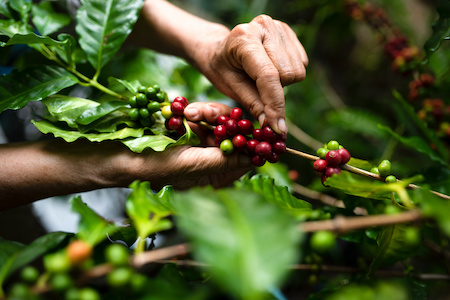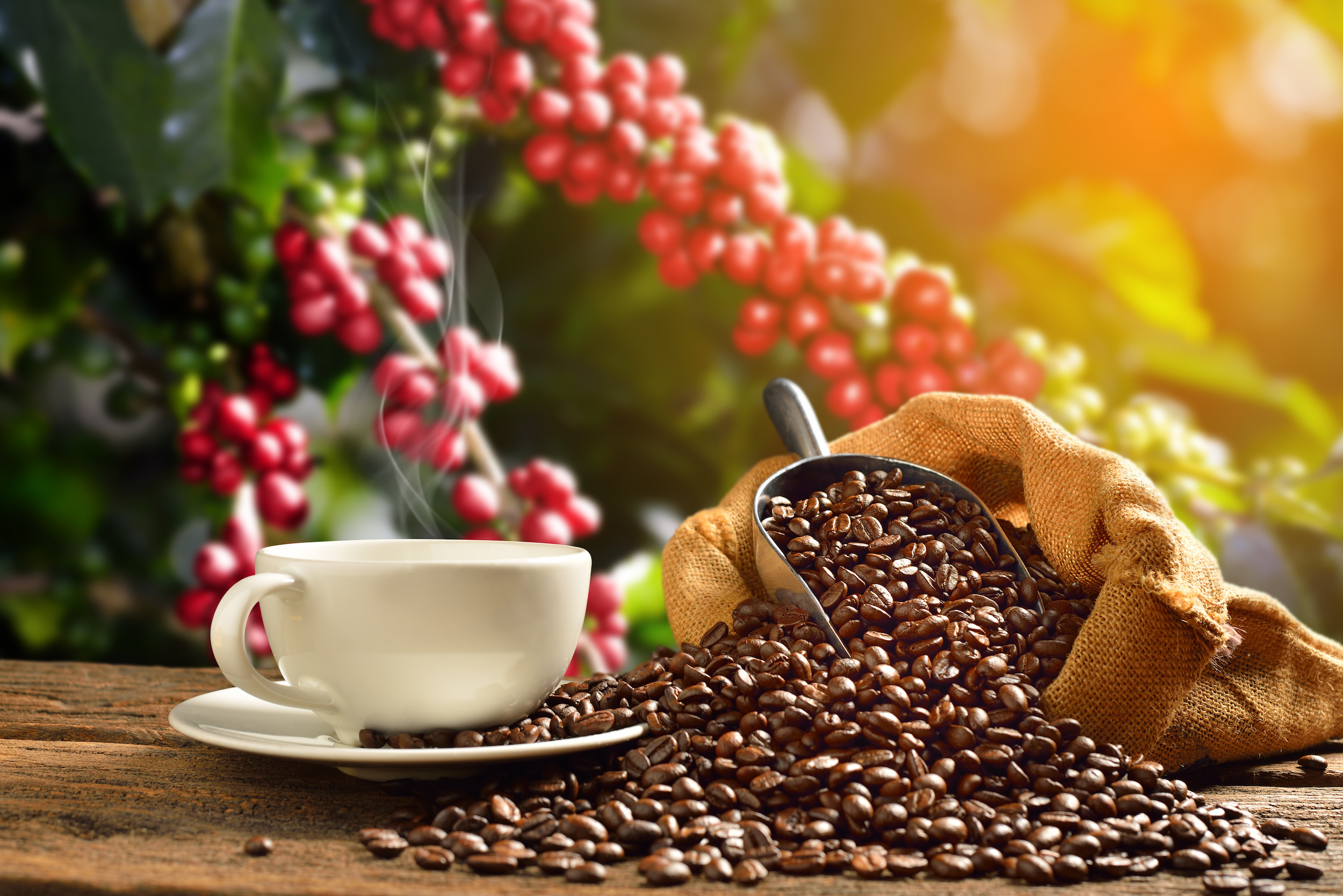Most people don’t know where their coffee comes from, and they have no idea what goes into making a great cup of coffee. With that said, coffee is a complex drink with many different flavor notes that can be affected by the region it’s grown in, the altitude, the processing method, and more.
As your local coffee service provider, we thought it would be cool to provide you with some information about this topic! Our blog post about where coffee comes from takes a deep dive into the world of coffee production. We explore all of the factors that go into making a great cup of joe. We hope you enjoy this quick read!
WHERE DOES COFFEE COME FROM?
Coffee is one of the most popular beverages in the world, enjoyed by millions of people on a daily basis. But where does coffee come from? The coffee plant, known scientifically as Coffea, is a native of Ethiopia. From there, it spread to Arabia and then to India, eventually making its way to Europe and the Americas. Today, coffee is grown in countries all around the world, including Brazil, Colombia, Vietnam, and Indonesia. The coffee bean is actually the seed of the coffee fruit, which is known as a coffee cherry. Once the cherries are picked, they are typically processed by either drying or wetting them. This removes the fruit from the bean, leaving behind the green coffee bean that will eventually be roasted and ground into coffee. So next time you enjoy a cup of joe, remember that it all started with a small red fruit growing on a coffee plant in Ethiopia.
WHAT DOES A COFFEE PLANT LOOK LIKE?
The coffee plant is an evergreen shrub that can grow to 10 feet tall. It has glossy, dark green leaves that are oval-shaped and leathery. The plant produces small, white flowers that have a sweet smell. The coffee beans are actually the seeds of the fruit, which is called a coffee cherry. The cherries are typically red or yellow when they are ripe and ready to be harvested. Once the cherries are picked, the beans are removed and roasted to create the popular beverage we know as coffee.
TYPES OF COFFEE PLANTS
There are two main types of coffee plants:
Arabica
Arabica plants are native to Ethiopia and account for about 60% of the world’s coffee production. They are generally considered to produce a better-quality bean with a more complex flavor.
Robusta
Robusta plants are native to Central and Western Africa and account for the remaining 40% of global production. They are typically hardier and less susceptible to disease, but their beans are often described as being harsh-tasting.
HOW ARE THE COFFEE BEANS REMOVED FROM THE CHERRIES?
The process of removing coffee beans from the cherries is a delicate one that impacts the flavor and aroma of the final product. Here’s a little insight into the process of removing the coffee beans from the cherries:
1. Processing
Coffee bean processing is an essential step in coffee production. There are two main methods of processing coffee beans: wet processing and dry processing.
Wet processing involves removing the skin and pulp shortly after the coffee cherries are harvested. The coffee beans with the parchment still intact are then laid out in the sun to dry.
Dry processing begins with drying the coffee cherries. Freshly picked coffee cherries are laid out in the sun to dry with the husk and pulp still intact. Once dry, the husk and pulp are removed to reveal the seed and parchment inside.
Each method has its own benefits and drawbacks, so coffee producers must carefully consider which method is best for their needs. Nonetheless, both wet and dry processing result in high-quality coffee beans that can be used to produce delicious cups of coffee.
2. Hulling
Coffee bean hulling is the removal of the parchment layer. The result of the final processing step is finally something that resembles coffee beans, only they’re green, dense, hard, and taste very earthy! This final step is important in order to achieve the desired taste of coffee.
3. Sorting
Coffee beans are typically sorted by one of several methods. The most common method is by weight, with the beans being separated into different categories according to how much they weigh. Other sorting methods include density, size, and shape. Once the coffee beans have been sorted, they are packaged in moisture-resistant bags to protect them from humidity and shipped to their new homes. There, they will be roasted and turned into coffee as we know it. With so many coffee bean sorting methods available, growers and buyers can choose the method that best suits their needs.
HOW IS COFFEE DISTRIBUTED?
Coffee is one of the most popular drinks in the world, and it’s no surprise that its distribution is a complex and tightly controlled process. Coffee beans are grown in more than 70 countries around the globe, but the vast majority of beans are exported from just a handful of origins. Brazil, Vietnam, and Colombia are the top three producers of coffee, accounting for more than 40% of the world’s total output. The beans are then sold to coffee roasters, who blend and roast them to produce the finished product. Depending on the type of coffee being produced, the roasting process can take anywhere from a few minutes to several hours. Once roasted, the beans are typically packaged in airtight bags and shipped to grocery stores, cafes, and other retailers. Because coffee is such a delicate product, care must be taken at every step of the distribution process to ensure that the beans retain their flavor and freshness.
NEED COFFEE? CALL POT O’ GOLD!
At Pot O’ Gold, we are your premier coffee service in Seattle and the surrounding areas. We can set up a fresh brew, single cup, thermal, as well as semi- and fully-automatic espresso machines in your office. We also offer office supply and breakroom services. Whatever you need for your office breakroom, whether it’s carbonated water coolers or delicious snacks, we’re able to supply you with it. We pride ourselves on providing amazing coffee and quality products to our customers. Contact us today to see how we can help you!

